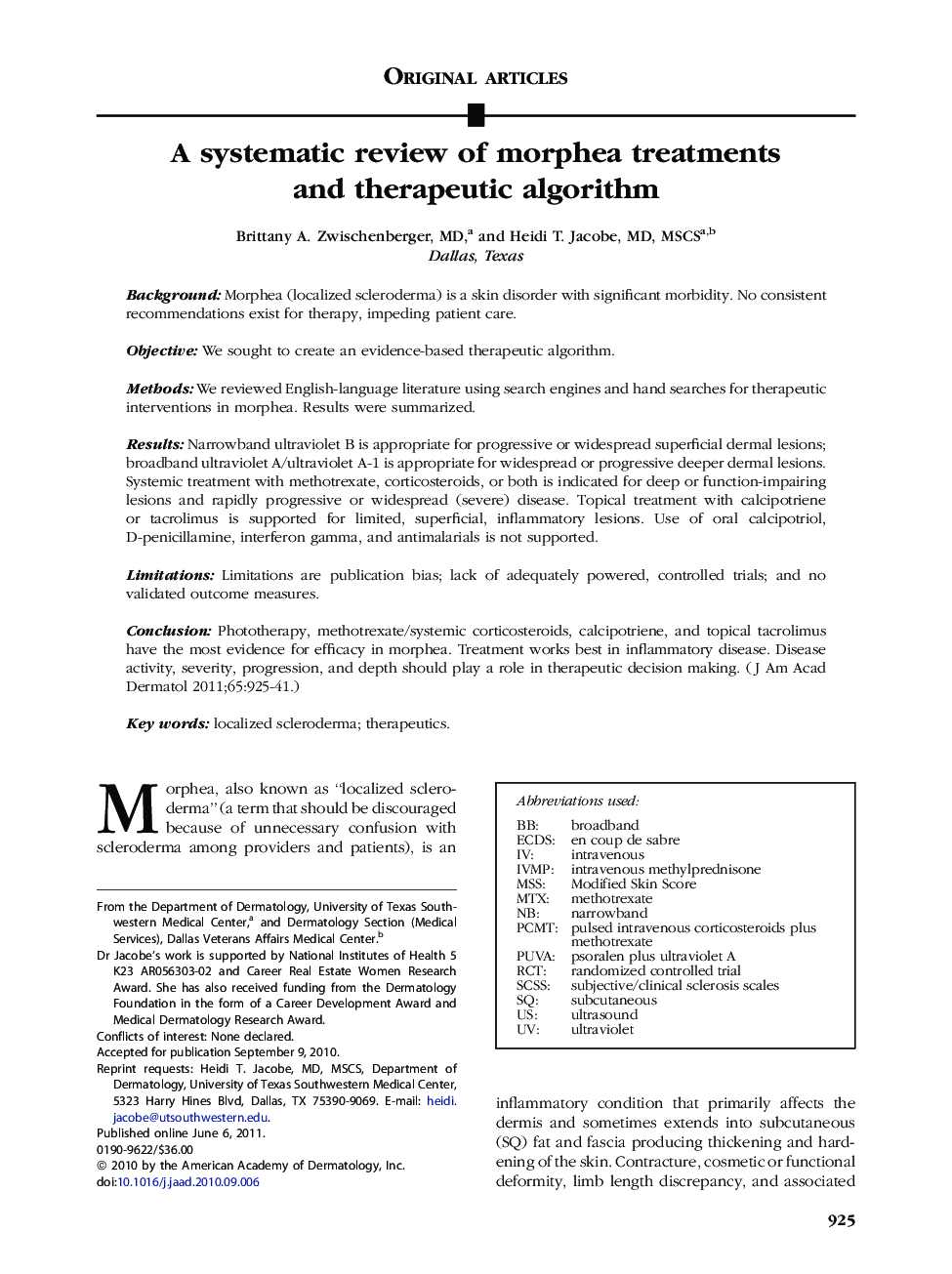| Article ID | Journal | Published Year | Pages | File Type |
|---|---|---|---|---|
| 3207193 | Journal of the American Academy of Dermatology | 2011 | 17 Pages |
BackgroundMorphea (localized scleroderma) is a skin disorder with significant morbidity. No consistent recommendations exist for therapy, impeding patient care.ObjectiveWe sought to create an evidence-based therapeutic algorithm.MethodsWe reviewed English-language literature using search engines and hand searches for therapeutic interventions in morphea. Results were summarized.ResultsNarrowband ultraviolet B is appropriate for progressive or widespread superficial dermal lesions; broadband ultraviolet A/ultraviolet A-1 is appropriate for widespread or progressive deeper dermal lesions. Systemic treatment with methotrexate, corticosteroids, or both is indicated for deep or function-impairing lesions and rapidly progressive or widespread (severe) disease. Topical treatment with calcipotriene or tacrolimus is supported for limited, superficial, inflammatory lesions. Use of oral calcipotriol, D-penicillamine, interferon gamma, and antimalarials is not supported.LimitationsLimitations are publication bias; lack of adequately powered, controlled trials; and no validated outcome measures.ConclusionPhototherapy, methotrexate/systemic corticosteroids, calcipotriene, and topical tacrolimus have the most evidence for efficacy in morphea. Treatment works best in inflammatory disease. Disease activity, severity, progression, and depth should play a role in therapeutic decision making.
